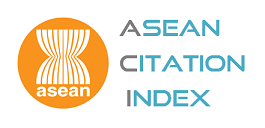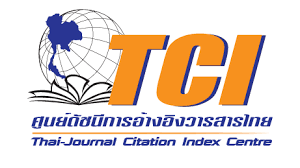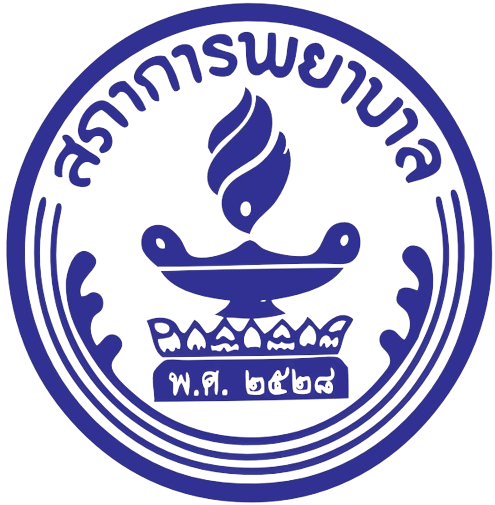Effects of Implementing Pressure Injury Prevention Practice Guidelines in Preterm Neonates Using Non-invasive Ventilation
DOI:
https://doi.org/10.60099/jtnmc.v40i02.273997Keywords:
pressure injury prevention, clinical nursing practice guidelines, preterm neonates, non-invasive ventilation, nasal continuous positive airway pressure (NCPAP)Abstract
Introduction Non-invasive ventilation (NIV) is a standard treatment for respiratory support for preterm neonates, and its use has been increasing. However, it has been found that the use of NIV carries a high risk of nasal injury in preterm neonates, leading to pain, discomfort, nasal deformities, and prolonged hospital stays. Therefore, the development of nursing practice guidelines to prevent pressure injury from NIV in preterm neonates is crucial in preventing these injuries.
Objectives 1) To develop a nursing practice guideline for preventing pressure ulcers from noninvasive ventilation in preterm neonates and 2) To test the effects of implementing the guidelines on the incidence of pressure injuries, knowledge and skills of nurses in pressure injury prevention, adherence to the practice guideline, and satisfaction with the use of the practice guideline.
Research Design This study was a research and development.
Methodology This study was conducted in four phases: 1) Situation analysis, 2) Guideline development, 3) Guideline implementation, and 4) Outcome evaluation and improvement. The participants comprised 55 nurses working in neonatal intensive care units, sick newborn units, and preterm newborn units, and 308 preterm neonates receiving NIV. The neonates were divided into a control group (using existing guidelines) and an experimental group (using newly developed guidelines), with 154 participants in each group. The research instruments included: 1) A teaching plan on ‘Nursing to Prevent Pressure Ulcers from Non-Invasive Ventilation in Preterm Neonates’, 2) Nursing practice guidelines for preventing pressure injury from NIV in preterm neonates, developed based on empirical evidence, including six key issues: 1) Skin and pressure injury assessment, 2) Preparation of equipment and neonates, 3) Application of nasal continuous positive airway pressure (NCPAP), 4) Post-NIV placement monitoring and care, 5) Early weaning from NIV, and 6) Outcome evaluation. These practice guidelines were reviewed by registered nurses representing the users who implement the guidelines for feasibility, appropriateness, meaning, and effectiveness. The instruments for data collection included four sets: 1) A knowledge and skills assessment form for nurses on preventing pressure injury from NIV in preterm neonates, 2) A compliance assessment checklist for nurses following the practice guidelines, 3) A satisfaction assessment questionnaire for nurses on the practices, and 4) A skin and pressure injury assessment record form for neonates receiving NIV. Data were analyzed using descriptive statistics, Paired t-test, and Chi-square test.
Results The participants included 55 nurses and 308 preterm neonates, divided into a control group (n = 154) and an experimental group (n = 154). The incidence of pressure injury from NIV in the experimental group (1.9%) was significantly lower than the control group (6.5%) (χ2 = 3.935, p = .04). 3) The knowledge of nurses on preventing pressure injury from NIV in preterm neonates was significantly higher after the training (M = 13.93, SD = 1.74) compared to before the training (M = 10.04, SD = 2.76) (t = -10.380, p < .01). 4) The skills in pressure injury assessment of nurses were significantly higher after the training (M = 8.35, SD = 1.64) compared to before the training (M = 4.40, SD = 2.39) (t = -12.080, p < .01). 5). Nurses’ adherence to the nursing practice guidelines was at the highest level, with a mean score of 28.95 (SD = 2.22), representing 96.5% adherence, and 6) Nurses’ satisfaction with the practice guidelines was at the highest level (M = 4.66, SD = 0.42, Min-Max = 3.4-5.0).
Recommendation The developed practice guidelines are effective in preventing pressure injuries from NIV in preterm neonates. Nurses working in neonatal units that provide NIV can implement these guidelines to prevent pressure injuries by adapting them to the specific context of their units. Besides, preparing nurses with the necessary knowledge and skills to use the practice guidelines, monitoring adherence to the guidelines, and continuously measuring outcomes for ongoing improvement are keys to success.
Downloads
References
Subramaniam P, Ho JJ, Davis PG. Prophylactic nasal continuous positive airway pressure for preventing morbidity and mortality in very preterm infants. Cochrane Database Syst Rev. 2016(6):Cd001243. https://doi.org/10.1002/14651858.cd001243.pub3 PMID: 27315509
Imbulana DI, Manley BJ, Dawson JA, Davis PG, Owen LS. Nasal injury in preterm infants receiving non-invasive respiratory support: a systematic review. Arch Dis Child Fetal Neonatal Ed. 2018 Jan;103(1):F29-F35. https://doi.org/10.1136/archdischild-2017-313418 PMID: 28970314
Ribeiro DFC, Barros FS, Fernandes BL, Nakato AM, Nohama P. Nasal prongs: risks, injuries incidence and preventive approaches associated with their use in newborns. J Multidiscip Healthc. 2020 Jun 19;13:527-537. https://doi.org/10.2147/JMDH.S252017. PMID: 32606724 PMCID: PMC7311096
Newnam KM, McGrath JM, Estes T, Jallo N, Salyer J, Bass WT. An integrative review of skin breakdown in the preterm infant associated with nasal continuous positive airway pressure. J Obstet Gynecol Neonatal Nurs. 2013 Sep-Oct;42(5):508-16. https://doi.org/10.1111/1552-6909.12233. Epub 2013 Sep 4. PMID: 24020476
Imbulana DI, Owen LS, Dawson JA, Bailey JL, Davis PG, Manley BJ. A randomized controlled trial of a barrier dressing to reduce nasal injury in preterm infants receiving binasal noninvasive respiratory support. J Pediatr. 2018 Oct;201:34-9.e3. https://doi.org/10.1016/j.jpeds.2018.05.026. Epub 2018 Jul 4. PMID: 30251638
Rezaei P, Jafari-Mianaei S, Sadeghnia A, Heidari Z. Protective dressings, injury, and device failure in preterm infants receiving nasal continuous positive airway pressure: a randomized controlled trial. Adv Skin Wound Care. 2021 Sep 1;34(9):1-6. https://doi.org/10.1097/01.ASW.0000767344.37591.b6. PMID: 34415257
Xie LH. Hydrocolloid dressing in preventing nasal trauma secondary to nasal continuous positive airway pressure in preterm infants. World J Emerg Med. 2014;5(3):218-22. https://doi.org/10.5847/wjem.j.issn.1920-8642.2014.03.011 PMID: 25225588 PMCID: PMC4163817
Badr LK., Zeineddine MH, Abbas H, Charafeddine L. (2016). NeoSeal to prevent nasal injury in preterm infants receiving oxygen therapy. Neonatal Netw, 35(4), 228-33. https://doi.org/10.1891/0730-0832.35.4.228 PMID: 27461201
Bashir T, Murki S, Kiran S, Reddy VK, Oleti TP. ‘Nasal mask’ in comparison with ‘nasal prongs’ or ‘rotation of nasal mask with nasal prongs’ reduce the incidence of nasal injury in preterm neonates supported on nasal continuous positive airway pressure (nCPAP): a randomized controlled trial. PLoS One. 2019 Jan 31;14(1):e0211476. https://doi.org/10.1371/journal.pone.0211476. PMID: 30703172 PMCID: PMC 6355017
Newnam KM, McGrath JM, Salyer J, Estes T, Jallo N, Bass WT. A comparative effectiveness study of continuous positive airway pressure-related skin breakdown when using different nasal interfaces in the extremely low birth weight neonate. Appl Nurs Res. 2015 Feb;28(1):36-41. https://doi.org/10.1016/j.apnr.2014.05.005. Epub 2014 Jun 5. PMID: 25017108
Haymes E. The effects of continuous positive airway pressure (CPAP) on nasal skin breakdown. Journal of Neonatal Nursing. 2019;26(1):37-42. https://doi.org/10.1016/j.jnn.2019.09.007
Magalhães PAF, D’Amorim ACG, Oliveira EFALd, Ramos MEA, Mendes APDdA, Barbosa JFdS, et al. Rotating nasal masks with nasal prongs reduces the incidence of moderate to severe nasal injury in preterm infants supported by noninvasive ventilation. Revista Brasileira de terapia intensiva. 2022;34(2):247-54. https://doi.org/10.5935/0103-507X.20220022-pt. PMID: 35946655 PMCID: PMC9354102
Milligan PS, Goldstein MR. Implementation of an evidence-based non-invasive respiratory support (NIRS) bundle in the NICU to decrease nasal injury complications. Journal of Neonatal Nursing. 2017;23(2):89-98. https://doi.org/10.1016/j.jnn.2016.05.003
Tongsawang N, Pookboonmee R, Daramas T. The development of clinical nursing practice guideline to prevent nasal skin injury in premature infants with nasal continuous positive airway pressure. Rama Nurs J. 2013;19(1):16-30. Available from: https://he02.tci-thaijo.org/index.php/RNJ/article/view/9108/7830 (in Thai)
Chinthanawongsa P, Pookboonmee R, Orathai P. The effect of clinical nursing practice guidelines to prevent nasal skin injury on nasal skin injury of premature infants with nasal continuous positive airway pressure. Rama Nurs J. 2016;22(1):35-48. Available from: https://he02.tci-thaijo.org/index.php/RNJ/article/view/40132/53425 (in Thai)
Krzyzewski JJ, Rogers KK, Ritchey AM, Farmer CR, Harman AS, Machry JS. Reducing device-related pressure injuries associated with noninvasive ventilation in the neonatal intensive care unit. Respir Care. 2022 Jan;67(1):24-33. https://doi.org/10.4187/respcare.08850. Epub 2021 Oct 26. PMID: 34702768
Queen Sirikit National Institute of Child Health. Pressure injury incidence of neonates using non- invasive ventilation: a 3-year retrospective report (2020-2022). Nursing Division, Queen Sirikit National Institute of Child Health; 2024.
Schmidt NA, Brown JM. Evidenced-based practice for nurses: appraisal and application of research (4th ed.). Burlington, MA: Jones and Bartlett; 2019.
Dusin J, Melanson A, Mische-Lawson L. Evidence-based practice models and frameworks in the healthcare setting: a scoping review. BMJ Open. 2023 May 22;13(5): e071188. https://doi.org/10.1136/bmjopen-2022-071188. PMID: 37217268 PMCID:PMC10230988
Faul F, Erdfelder E, Buchner A, Lang A. et al. Statistical power analyses using G*Power 3.1: Tests for correlation and regression analyses. Behavior Research Methods. 2009,41(4):1149–60. https://doi.org/10.3758/BRM.41.4.1149
Edsberg LE, Black JM, Goldberg M, McNichol L, Moore L, Sieggreen M. Revised National Pressure Ulcer Advisory Panel Pressure Injury Staging System: revised pressure injury staging system. J Wound Ostomy Continence Nurs. 2016 Nov/Dec;43(6):585-97. https://doi.org/10.1097/WON.0000000000000281. PMID: 27749790 PMCID: PMC5098472
Joanna Briggs Institute. JBI Levels of evidence. [Internet]. 2014 [cited 2024 Jan 15]. Available from: https://jbi.global/sites/default/files/2019-05/JBI-Levels-of-evidence_2014_0.pdf
Joanna Briggs Institute. JBI Grades of recommendation [Internet]. 2014 [cited 2024 Jan 15]. Available from: https://jbi.global/sites/default/files/2019-05/JBI-grades-of-recommendation_2014.pdf
Downloads
Published
How to Cite
Issue
Section
License
Copyright (c) 2025 Journal of Thailand Nursing and Midwifery Council

This work is licensed under a Creative Commons Attribution-NonCommercial-NoDerivatives 4.0 International License.








